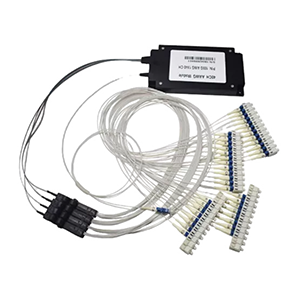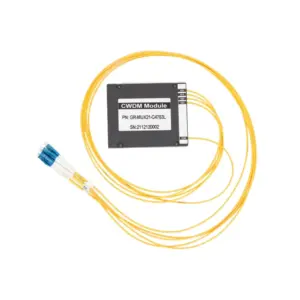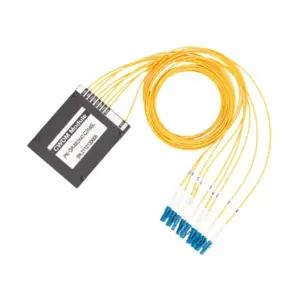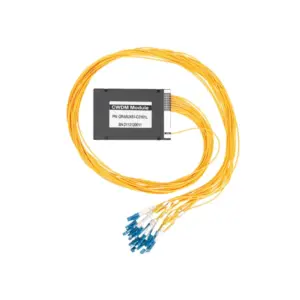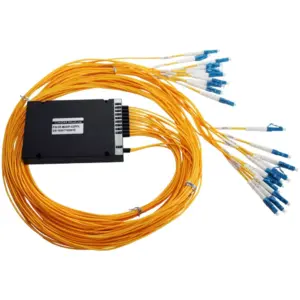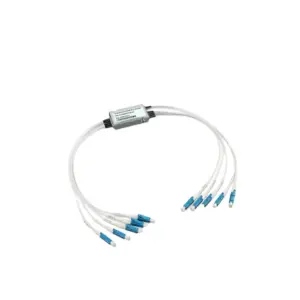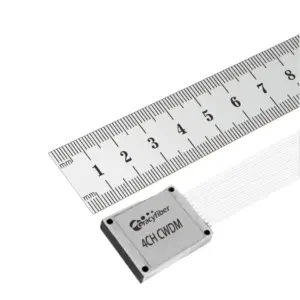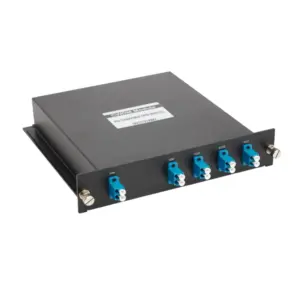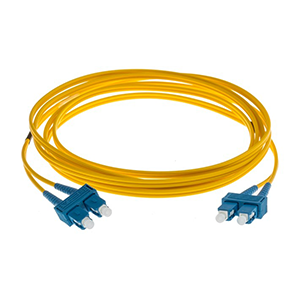Welcome to this blog! I will introduce you to the application and importance of Wavelength Division Multiplexing (WDM for short) in personal computers (PC), and explain in detail the WDM technology in PC, its advantages and uses. By understanding the basic principles and working methods of WDM in PC, you will understand the wide range of applications and advantages of WDM in the fields of PC hardware and communications.
Overview of WDM in personal computers
Wavelength Division Multiplexing (WDM) plays an important role in personal computer (PC) systems, bringing a wide range of applications to PC hardware and communications fields. The basic principles and working methods of WDM in PC systems will be explained below, and its wide application in PC hardware and communications fields will be emphasized.
WDM is an optical communication technology that uses optical signals of different wavelengths to transmit data in the same optical fiber. It is based on the wavelength characteristics of light and multiplexes multiple optical signals by separating different wavelengths so that they can be transmitted simultaneously and demultiplexed at the receiving end. This enables multiple independent communication channels to transmit data in the same optical fiber, improving data transmission efficiency and bandwidth utilization.
In PC systems, the application of WDM mainly focuses on two aspects:
-
Network communication:
WDM is used in PC systems to provide high-speed, high-bandwidth network communications. By using WDM technology, PCs can be connected to the network through optical fiber and achieve high-speed data transmission. WDM allows multiple data channels to be transmitted simultaneously, with each channel using a different wavelength, thereby greatly increasing the transmission capacity and bandwidth of the network. This is important for applications that require processing large amounts of data, high-speed interconnection, or remote data transmission, such as data centers, cloud computing, high-performance computing, etc.
-
Fiber optic transmission:
WDM is also widely used in optical fiber transmission in PC systems. PCs can use WDM technology to combine multiple data channels into one optical fiber for transmission, achieving high-speed and reliable data transmission. This enables the PC to support higher data transfer rates, improving the efficiency and reliability of data transmission. In storage systems, WDM can be used to connect storage devices and computers to achieve fast data reading, writing and transmission. In addition, WDM can also be used for optical fiber communication interfaces within PC systems, providing higher transmission rates and greater bandwidth.
WDM components and functions in PC
In personal computers (PCs), hardware components related to Wavelength Division Multiplexing (WDM) include WDM fiber optic transceivers and fiber optic interface cards. These components play a key role in PCs and are used for functions such as transmitting and receiving optical signals, and multi-wavelength data transmission.
-
WDM fiber optic transceiver:
A WDM fiber optic transceiver is a device used to send and receive optical signals with multiple wavelength channels. These transceivers typically contain multiple lasers and optical receivers, each corresponding to a specific wavelength channel. The main function of the WDM fiber optic transceiver is to convert electrical signals into optical signals and send them to the optical fiber, or to convert the received optical signals into electrical signals for processing. By using optical signals of different wavelengths, WDM fiber optic transceivers enable the transmission of multiple communication channels in the same optical fiber.
-
Fiber optic interface card:
The optical fiber interface card is an expansion card installed in the PC for physical connection and data transmission with optical fiber. Fiber optic interface cards usually have fiber optic connectors that plug into the fiber optic interface of the fiber optic transceiver. These interface cards also contain optical-to-electrical converters that convert optical signals to electrical signals or electrical signals to optical signals. The main function of the optical fiber interface card is to provide the physical connection between the PC and the optical fiber and to realize the sending and receiving of optical signals. It allows PCs to carry out high-speed data transmission, remote communication and network connections through optical fiber.
The functions of these WDM-related hardware components mainly include the following aspects:
-
Sending and receiving optical signals:
WDM fiber optic transceiver can convert electrical signals into optical signals of specific wavelengths and send them into optical fibers. The optical fiber interface card converts the received optical signal into an electrical signal through a photoelectric converter for processing by the PC. In this way, the PC can send and receive optical signals with other devices through optical fibers.
-
Multi-wavelength data transmission:
WDM fiber optic transceivers combine multiple independent communication channels into one optical fiber for transmission by using optical signals of different wavelengths. In this way, simultaneous transmission of multi-wavelength data is achieved, improving data transmission efficiency and bandwidth utilization. The fiber optic interface card can analyze the received multi-wavelength optical signals and convert them into electrical signals for processing.
In PCs, WDM-related hardware components such as WDM fiber optic transceivers and fiber optic interface cards play a vital role. They implement the function of transmitting and receiving optical signals, and provide high-speed, high-bandwidth data transmission capabilities through multi-wavelength data transmission. This enables PCs to connect to the network through optical fiber, achieve long-distance communication and high-speed data transmission, and meet the growing data demand.
WDM application cases in PC
In personal computers (PCs), Wavelength Division Multiplexing (WDM) technology has a wide range of application cases and can provide functions such as high-speed data transmission, remote communication and data center connectivity. Below are several practical application cases of WDM technology in PCs, emphasizing the advantages of WDM in improving data transmission speed and reliability.
-
High-speed data transmission:
WDM technology is widely used in PCs for high-speed data transmission. By using multi-wavelength optical signals, WDM enables multiple independent communication channels to be transmitted on the same optical fiber. This greatly improves the speed and bandwidth of data transmission. In the PC field, WDM can be used to connect data storage devices, transmit large-capacity files, real-time streaming, etc. For example, by using WDM technology, PCs can achieve high-speed data backup and recovery, speed up file transfers, improve multimedia fluency, and meet users’ needs for fast data access and transmission.
-
Remote communication:
WDM technology is also used in remote communications in PCs. By using fiber optic connections and WDM technology, PCs can achieve high-speed, reliable remote communications. This is very important for remote working, remote collaboration and remote meetings. WDM technology allows PCs to transmit data over long distances through optical fiber and supports multiple communication channels at the same time. This enables PC users to transmit large amounts of data in real time, conduct high-definition video conferencing, etc., improving the efficiency and quality of remote communication.
-
Data Center Connection:
WDM technology plays a key role in the connection between PCs and data centers. Data centers often need to handle large amounts of data transfers and high-speed network connections. By using WDM technology, PCs can be connected to data centers through optical fibers to achieve high-speed, large-capacity data transmission. This is important for applications such as cloud computing, big data analytics and virtualization. WDM technology provides a high-bandwidth data transmission channel, allowing PCs to quickly access and process data center resources, improving the connection speed and reliability between the data center and PCs.
WDM technology has many advantages in these application cases, including:
- High-speed data transmission: WDM technology provides high-bandwidth and high-speed data transmission capabilities by transmitting optical signals of multiple wavelengths simultaneously.
- Increase bandwidth utilization: WDM technology allows multiple independent communication channels to transmit data on the same optical fiber, improving bandwidth utilization.
- Long-distance transmission: WDM technology can carry out long-distance data transmission through optical fiber, supporting high-speed communication between PC and remote devices.
- Reliability and fault tolerance: WDM technology uses optical signals of different wavelengths for data transmission. Even if one channel fails, the other channels can still work normally, improving the reliability and fault tolerance of the system.
To sum up, the application cases of WDM technology in personal computers cover the fields of high-speed data transmission, remote communication and data center connection. By providing high-speed, reliable data transmission with high bandwidth utilization and fault tolerance, WDM technology provides PC users with faster, more efficient and reliable communication and data processing capabilities.
Summary
Thank you for reading this blog. I hope you will have a deeper understanding of the application and importance of Wavelength Division Multiplexing (WDM for short) in personal computers (PCs). WDM technology plays an important role in PC systems, providing high-speed and efficient solutions for data transmission and communication.
FAQs about WDM in PC
Lorem ipsum dolor sit amet, consectetur adipiscing elit, sed do eiusmod tempor incididunt ut labore et dolore magna aliqua. Ut enim ad minim veniam, quis nostrud exercitation ullamco laboris nisi ut aliquip ex ea commodo consequat.
Lorem ipsum dolor sit amet, consectetur adipiscing elit, sed do eiusmod tempor incididunt ut labore et dolore magna aliqua. Ut enim ad minim veniam, quis nostrud exercitation ullamco laboris nisi ut aliquip ex ea commodo consequat.
WDM Related Products in PC
-
4 Channel CWDM Module
-
8 Channel CWDM Module
-
16 Channel CWDM Module
-
18 Channel CWDM Module
-
Industrial Grade CWDM Module
-
Mini CWDM module
-
Box CWDM module
-
200G QSFP56 PAM4 CWDM4 2km Transceiver Module
-
2x100G QSFP-DD CWDM4 2km Transceiver Module
Our products provide advanced WDM technical support, bringing huge improvements to your personal computer (PC). Whether you need high-speed data transmission or stable remote communications, we can provide you with efficient and reliable solutions.

